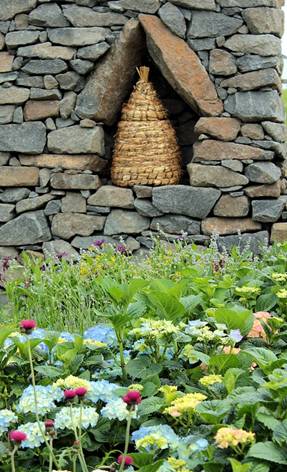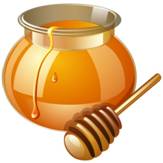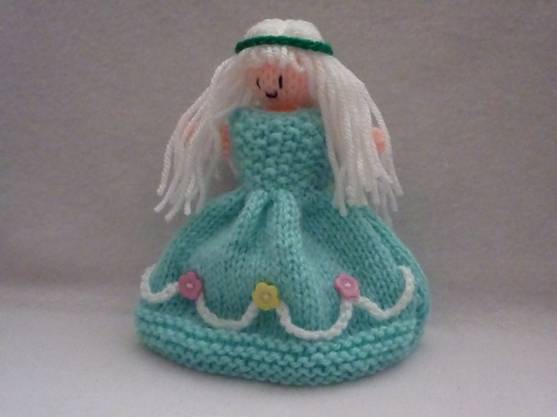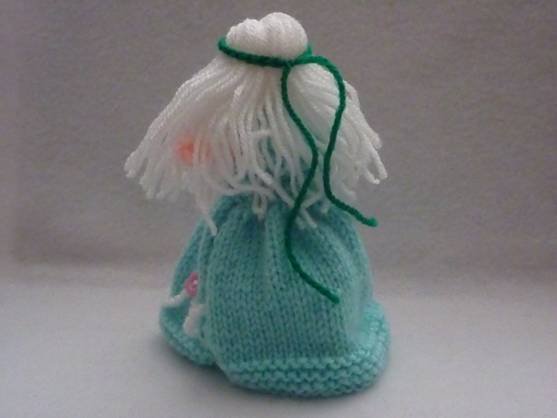
Salty Sam’s Fun Blog for Children
Number 322
ln the Hive
Hello Everyone

So this week was a big week for Auntie Alice.
She set up two bee hives and introduced a colony of bees into each of them.
She had help from her mentor from the local bee keeping association.
A mentor is like a teacher who helps you with things.
There are already lots of flowers in Auntie Alice’s garden but this will be the first summer that she has eaten honey from them – hopefully!
Bees are used commercially (that means doing something to make money) for honey production but they are also really necessary for the pollination of crops too.
The wax from the hive can be made into all sorts of products. lt makes very good-quality candles that do not produce smoke like tallow candles (candles made from animal fat). lt can be used to make soap and other cosmetics too.
Only two of the seven species of honey bee have been domesticated.
Their numbers have grown enormously and much commercial use has been made of them.
Bees’ nests in the wild are built in cavities, like hollow trees. There are many sheets of comb which are set apart at a certain distance to allow the bees to walk between them. This space is called ‘bee space’.
A man-made hive will replicate these living quarters, but in a more uniformed way. Different products are stored in these hives to feed young bees and also the whole colony over the winter when it is too cold to go outside – and there is not much food to be found anyway.
So much honey can be made in these hives that people can take some for themselves without letting the bees go short.
Bee-keeping has been going on for thousands of years. Ancient people in Egypt, China, Asia and South America kept bees.
European production was stepped up in the middle ages. Monks kept bees in monastery gardens. They used the honey and made wax candles to be put in church.
ln those days, hives were often made of straw. They looked like upside-down baskets. These kinds of structures are called skeps. They were kept in little niches in stone walls to protect them from the weather.
The monks would capture wild swarms in skeps of clay. The bees would be killed at the end of the season with sulphur smoke and then the honey could be harvested from the combs.
Modern beehives were invented in the 1800s by an American clergy man called Reverend Langstroth. (These kinds of hives are called Langstroth hives but other designs are also available today.)
They had removable combs which meant that the brood (baby unit) and honey stores could be kept separately. This meant the honey was kept in cleaner conditions and also that the bees did not have to be killed at the end of the summer. They could be left in the hive over winter to build up their numbers the following spring. This was a major step forward in beekeeping.
The boxes that made up the hive contained frames of comb with bee space between them. A bee keeper could remove frames to make inspections and not upset the bees too much.
Eggs are laid in the brood box. These turn into larvae and then bees.
There are three kinds of bees in a hive.
The queen is a female that spends her days laying eggs. She lays up to 2,000 eggs a day. She decides whether she wants to lay eggs that will turn into boys or girls.
The boy ones are unfertilized and the girl ones are fertilized. The cells the eggs are laid in are slightly different. The drone cells are bigger.
The girls are called workers and the boys are called drones.
The workers will decide how many of each type of egg is to be laid.
lt is they who prepare the different size cells, and the queen will feel the size of the cell she is laying into before she decides whether to lay a fertilized or unfertilized egg.
Bee keepers often mark their queens with a blob of colour on their backs so that they are easy to spot when the hive is opened up.
The colour for this year is white. So any queen born this year will be marked with a blob of white using a special pen you can buy from a bee equipment supplier.
From the time the eggs are laid, a worker emerges at 21 days, a drone at 24 days and a queen at 16 days.
A queen can be a good layer for three to five years.
Then a queen will; when the time is right, lay some eggs that will become queens.
A new queen will stay in the hive and the old queen will fly off with some followers to find another home.
Queens are genetically the same as workers but the female larvae become queens when they are fed royal jelly.
ln this way new colonies will be formed. The queen might need to fly off when the hive is getting a bit too crowded.
When the queen flies off out of the front entrance of the hive, she takes a lot of bees with her. This is called a swarm.
Some bees are left behind in the hive to stay with the new queen.
The swarm that flies off often lands in a hedge where it will wait while the bees decide where to go to set up a new home. Some scout bees will go off and try and find a good location.
When you see a swarm like this, it looks very dangerous but actually bees in this state are unlikely to sting. The swarm is fascinating to look at. lt looks like a big, liquid-like blob of bees as they are all clinging on to one another other.
Bees usually sting people and animals when they get near to their hive.
The bees are worried you might take their honey. They have worked very hard to make it and they need it as food! When they are in a swarm, the bees have no property to protect and so that is why they are unlikely to sting you if you are quite nearby.
The boy bees, or drones, go out and about when they are old enough looking for queens to mate with. These queens will be found in areas called ‘mating grounds’.
Drones have slightly bigger bodies than the workers and much bigger eyes.
They live for about 40 days on average.
Drones can’t sting. Very young bees can’t sting either.
Queens will only sting queens and will do this when they are newly-hatched and fighting for the right to be the egg layer of the colony.
Worker bees can sting but then will die afterwards. lf you get stung it is better to scratch the sting out rather than pull it.
Worker bees can lay eggs but they will all turn into drones. The other bees don’t much like this happening because they want it to only be the queen that lays eggs.
lf there are not plentiful stocks of food for the colony to overwinter successfully, these drones, who do next to no work in the hive are driven out when autumn comes.
The workers are females that do not tend to lay eggs. There are more workers than the other two types of bees.
The workers do many jobs in the hive. The jobs they do depend on how old they are.
The youngest look after the larvae, they become housekeepers and look after the hive, they attend the queen, they become guard bees at the entrance to the hive and then the last job they do in their life is foraging.
That means they go out looking for food to bring back to the hive for everyone to share.
Workers start collecting forage when they are about two weeks old but can get promoted before this if more food is needed – or regress to becoming a house bee again according to the needs of the hive at the time.
The workers only live for a few weeks and then die of exhaustion. They try to do this away from the hive so that they won’t get in the way of the other bees. By this time, very often their wings are worn ragged by flying.
When they are a house bee they will produce brood food, wax to make comb, turn nectar into honey and produce venom to attack intruders with when they guard the hive.
Comb is always made in a hexagonal pattern.
The workers do all of these jobs using chemicals from especially adapted glands on their body.
The drones may help with maintaining the temperature and humidity inside the hive by fanning their wings (the workers do too), but all of the rest of the work is done by the females.
Everything bees do is for the benefit of the colony.
They all know what needs to be done through their massive communication network. Most of this communication is achieved by sending out chemicals that have meaning. These chemicals are called pheromones. Scientists think that there are over fifty of these chemical messages that bees send to each other.
Bees have a good sense of smell.
The US military have trained bees to detect explosives.
The other way of communicating is through a waggle dance. A foraging bee who finds a good source of food will come back to the hive and tell the other bees about it. This saves time and energy because other bees can go straight to the food source.
The waggle dance is performed in a figure of eight and it tells other bees where the direction of the food source is in relation to the Sun. Bees’ eyes can see the Sun through clouds. The dance also tells the other bees about the distance they have to fly to get to the food source not just the direction.
A food source can appear very quickly; like brambles coming into flower in a hedgerow. The bees need to make the most of this information straight away.
Bees cannot see red light but they can see ultraviolet light which is how they can see the Sun on a cloudy day.
lt is the workers who encourage the queen to leave the hive and set up a new home elsewhere. They do this through a special dance.
There are different designs of hive a bee keeper can buy but they all have basically two different parts to them.
At the bottom there is a box called the brood box where the queen lives.
The queen lays eggs which turn into baby bees. Pollen is stored in the brood box. The babies are fed honey and pollen. lt is put in their cells (compartment where the egg was laid and the larva grows into a bee). A mixture of honey and pollen is called ‘bee bread’.
The boxes above this are called supers. More boxes are added through the summer as the honey production increases. Honey is stored in the supers. Bees turn the nectar they collect from flowers into honey.
There is a sheet of metal with holes in it between the brood box and the supers.
This is called a queen excluder. lt stops the queen from laying eggs in the honey store.
The queen is bigger than the other bees. The workers can get between the brood box and the supers through the holes but the queen can’t.
The queen excluder is removed in the winter so that all the bees can huddle together to keep warm. The queen stays in the middle of the group and is protected by them. All the other bees take turns being on the edge of the group.
Very low temperatures can kill bees, so bee keepers try to protect their hives from the worst of the winter weather. Cold is bad for bees but the damp is really bad too.
Bee keepers also want to protect the hives from mice, woodpeckers and badgers – and in some countries bears.
Some bee keepers have so many hives that they put little symbols on the hives above the entrance and they are convinced that the bees get to recognize their home by these pictures. Although drones do visit hives other than the one they originate from.
Auntie Alice will start with only two hives and then see how she gets on.
She has put them by a hedge so that they will be sheltered from hot sun and strong winds.
The entrances are facing south so that the bees will be woken up by the sunlight and hopefully start work early. As they come out of the entrance they have to fly over the hedge. lt is a good idea to get them flying high from the beginning of their forage.
We all hope they do well.
Auntie Alice will have to inspect the hives regularly. She has a bee-keeper’s suit to protect her, a smoker with newspaper and pine cones in it which is used to pacify the bees before she goes into the hive and a hive tool to prize open the hive once she has taken the roof off.
She needs to check that the bees are healthy and laying well.
She needs to check that honey production is good too.
There are lots of things to look out for, but she learnt so much when she went to her classes that she knows what to do.
She has to keep record cards for each hive so that she can remember everything she did and everything she saw.
Being a bee keeper is a lot of work but very interesting.
For the first time ever she know the bees buzzing in her garden are probably hers.
She hasn’t given them all names though – there are too many!
Bye bye everyone – don’t forget to subscribe to my blog!
lf you like my blog, please support it by telling all your friends and followers about it.
Thank you!
And see you again next Fun Friday!
Love and kisses
Salty Sam

www.christina-sinclair.com


Bill and Bob’s Joke of the Week![]()
![]()
Bob: What is more amazing than a talking dog?
Bill: l don’t know. What is more amazing than a talking dog?
Bob: A spelling bee!

Salty Sam © Christina Sinclair 2015
Unauthorized use and/or duplication of material from this blog without express and written permission from this blog’s author and owner is strictly prohibited.
Links may be used to www.christina-sinclair.com

Picture Gallery


Frames in a hive
 A hive
A hive

 Bee skep
Bee skep
 Recesses for bee skeps
Recesses for bee skeps
(geogportac.uk)
 A swarm
A swarm
(beesource.com)


 THE SALTY SAM NEWS DESK
THE SALTY SAM NEWS DESK

This week, we have another of Bill and Bob’s quizzes for you. They haven’t contributed anything to my blog for a while.
They made this quiz up while they were at Auntie Alice’s cottage one wet afternoon.
They went to see her new thatched roof.
It is finished now and she is very proud of it.

Anyway, here is their quiz…
Do you know what animals these characters from books are?
- Aslan
- Paddington
- Nana
- Jeremy Fisher
- Captain Flint
- Jolly Tall
- Bagheera
- Tao
- Timmy
- Babar


*********************
TO ADVERTISE ON THIS BLOG
PLEASE CONTACT:
christina.sinclair.ads@aol.co.uk
*********************


Quick Quiz
Can you un-muddle these words to find things that can be made from bees’ wax?
- snacled
- slopih
- stebcuhr
- enapshomadda
- tinotnem
- pallmib
- obulonsturni




lt’s the Weekend!

HOW TO MAKE A SUMMER FLOWER FAlRY
This pretty fairy has a dress decorated with flowers.
She looks all ready for a summer ball.
There is one more season fairy to look out for in a few weeks’ time.
This doll is easy for little fingers to dress but will need experienced knitter’s fingers to make.
BODY (KNIT ONE)
Using 4mm knitting needles and pink dk yarn cast on 17 stitches
Knit 24 rows of stocking stitch
Don’t cast off
Cut off the yarn leaving a length of about 20cm and thread this through the stitches on your needle and pull the knitting needle away
ARMS (KNIT TWO)
Using 4mm knitting needles and pink dk yarn cast on 6 stitches
Knit 8 rows of stocking stitch
Don’t cast off
Cut off the yarn leaving a length of about 10cm and thread this through the stitches on your needle and pull the knitting needle away
LEGS (KNIT TWO)
Using 4mm knitting needles and pink dk yarn cast on 8 stitches
Knit 14 rows of stocking stitch
Don’t cast off
Cut off the yarn leaving a length of about 10cm and thread this through the stitches on your needle and pull the knitting needle away
TO MAKE UP
- Sew up the back seam of the body and head right sides together using over-sew stitching
- Turn the body and head the right way out
- Pull the top of the head shut then stuff the head and body (you may need to put a couple of extra stitches in the top of the head in pink yarn to close up the little hole)
- Sew along the inner leg seams using over-sew stitching right sides together and turn the legs the right way out
- Tightly bind the ankles twice around with pink yarn
- Stuff the legs
- Sew across the top of the legs and the bottom of the body from behind (lay the legs across the stomach as you work) to attach the legs
- Sew a strand of pink yarn into the back of the neck and wrap it around the neck a couple of times, pull tight and secure the yarn into the centre back of the neck
- Embroider a face onto the front of the head using one strand of black yarn (you can pull double knitting yarn apart to get thinner strands)
- Sew along the under arm seams using over-sew stitching right sides together and turn the arms the right way out
- Tightly bind the wrists twice around with pink yarn
- Stuff the arms with the ends of the yarn left over from the knitting and a little stuffing as well
- Sew the arms securely to the sides of the body so that they point forward
- Wind some white yarn around the length of a pack of cards 10 times and sew the front of the loops to the top of the head so that the long hair flows down the back of the neck
- Wind some white yarn around the length of a pack of cards 30 times and sew the centre of the loops to the top of the head so that the long hair flows down each side of the head – your sewing should look like a centre parting
- Slightly trim the ends of the hair if necessary
Now you are ready to dress the doll…
DRESS SKIRT (KNIT TWO)
Using 4mm knitting needles and light green yarn cast on 31 stitches
Knit 6 rows of garter stitch
Knit 20 rows of stocking stitch
Don’t cast off
Cut off the yarn leaving a length of about 20-30cm and thread this through the stitches on your needle and pull the knitting needle away
DRESS BODICE [TOP] (KNIT TWO)
Using 4mm knitting needles and light green yarn cast on 11 stitches
Slip 1, (knit 1, purl 1) repeat the last 2 stitches to the end of the row
Repeat the last row 11 times (12 rows of moss stitch)
Cast off
TO MAKE UP
Pull in each of the tops of the skirts and sew to the bottom edge of the bodices of the dress
Crochet 25 chains into two lengths of white yarn
Fix these into four equal loops on the front of the dress and sew decorative buttons to the tops of the loops
Sew down the two dress side seams
Crochet 20 chains into a length of dark green yarn to make a garland for the doll’s head


Please note that the material on this blog is for personal use and for use in classrooms only.
It is a copyright infringement and, therefore, illegal under international law to sell items made with these patterns.
Use of the toys and projects is at your own risk.
©Christina Sinclair Designs 2015

Answers to the News Desk Quiz
- Aslan – a lion in The Lion, the Witch and the Wardrobe
- Paddington – a bear written about by Michael Bond
- Nana – the dog in Peter Pan
- Jeremy Fisher – is a frog from The Tale of Jeremy Fisher by Beatrix Potter
- Captain Flint – the Parrot in Treasure Island
- Jolly Tall – the giraffe in the Old Bear stories by Jane Hissey
- Bagheera – the black panther from The Jungle Book by Rudyard Kipling
- Tao – a Siamese cat from the book The Incredible Journey written by Sheila Burnford
- Timmy – the dog that joined adventures with Enid Blyton’s Famous Five
- Babar – the elephant created by Jean de Brunhoff



Quick Quiz Answers
- candles
- polish
- chest rub
- handmade soap
- ointment
- lip balm
- sunburn lotion




It’s actually a great and useful piece of info. I’m glad that you shared this helpful info with us. Please keep us up to date like this. Thanks for sharing.
Thank you for your comment.
l agree that it is really important for us to understand bees.
They are so important to us all.
Wonderful web site. A lot of useful information here. I am sending it to some friends and also sharing in delicious. And of course, thanks for your effort!
Thank you so much!
Thanks for another magnificent post. The place else could anybody get that type of information in such a perfect method of writing? I’ve a presentation next week, and I am at the look for such information.
Thank you and good luck!